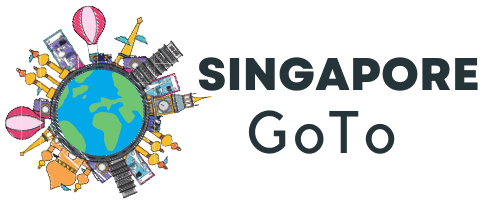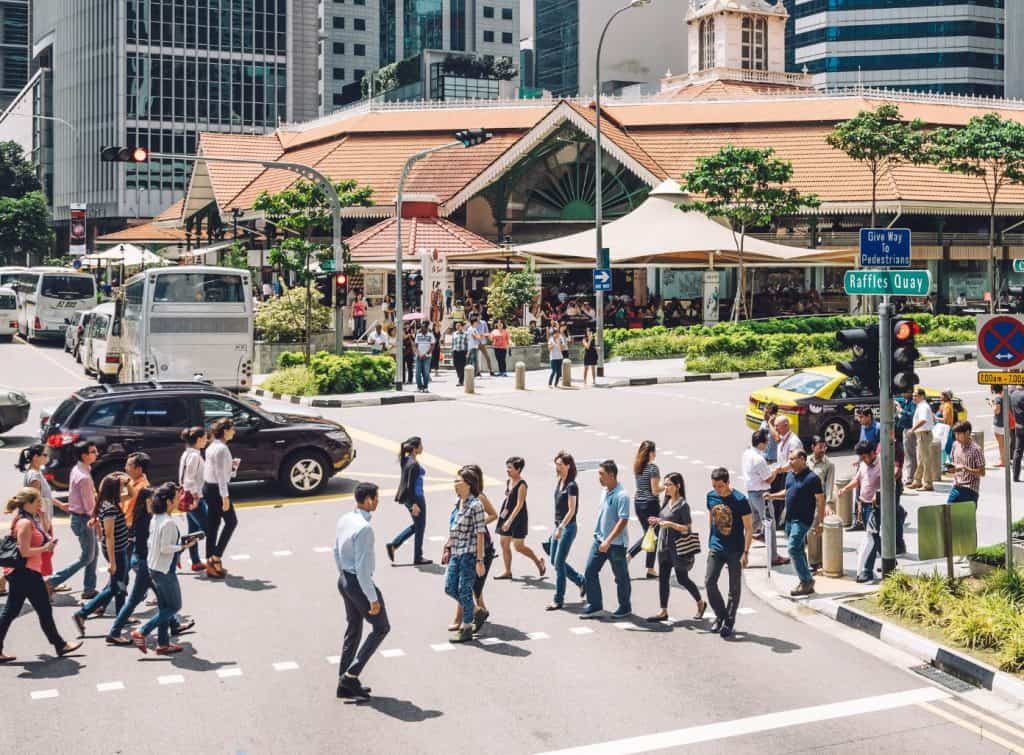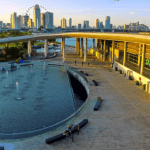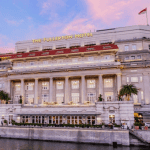Singapore is a country steeped in history, with a rich cultural tapestry that reflects its diverse population. This article will take you on a journey through time, exploring the key events and milestones that have shaped the nation we know today.
Early History of Singapore
Our story begins in the pre-colonial era, where Singapore was a sleepy fishing village inhabited by Malays and Orang Laut, the indigenous sea nomads. Its strategic location at the southern tip of the Malay Peninsula made it an important trading port, attracting merchants from China, India, and the Arab world.
The turning point came in 1819 when Sir Stamford Raffles arrived and founded modern Singapore. Recognizing its potential as a trading hub, Raffles persuaded the local Sultan to grant the British East India Company a trading post on the island. This marked the beginning of Singapore’s transformation from a sleepy village to a bustling trading center.
Colonial Rule and World War II
Under British colonial rule, Singapore experienced immense growth and development. The port flourished, attracting immigrants from all corners of the world. However, this prosperity came to a halt during World War II when the Japanese invaded and occupied Singapore. The occupation was marked by hardship and brutality, with the local population enduring immense suffering.
After the war, Singapore faced the arduous task of recovery. With self-governance as the ultimate goal, the nation focused on rebuilding its economy and infrastructure. In 1959, Singapore achieved self-governance under Chief Minister Lee Kuan Yew, marking a significant step towards independence.
Road to Independence

The road to independence was not without challenges. Singapore faced political instability, economic vulnerabilities, and social tensions. These challenges led to a brief merger with Malaysia in 1963, which was ultimately unsuccessful due to ideological differences. Singapore then became an independent nation on August 9, 1965.
Post-war Recovery and Self-governance
Following World War II, Singapore embarked on an ambitious journey to rebuild and transform itself. The government launched initiatives to boost industrialization and attract foreign investments. The establishment of the Jurong Industrial Estate in the 1960s marked the beginning of Singapore’s economic transformation, leading to rapid industrialization and job creation.
Simultaneously, the government focused on developing social and educational infrastructure, making healthcare and education accessible to all. These efforts laid the foundation for Singapore’s remarkable economic and social progress.
Merger with Malaysia
Singapore’s merger with Malaysia was initially seen as a path towards greater prosperity and stability. However, the ideological differences between the ruling parties led to tensions and conflicts. The central issue was the question of Singapore’s multi-racial identity and the Malay-centric policies adopted by Malaysia. These tensions eventually led to Singapore’s separation from Malaysia in 1965.
Separation and Independence
August 9, 1965, marked a significant milestone in Singapore’s history as it gained independence. Despite the challenges of being a small, resource-limited nation, Singapore was determined to succeed. The government embarked on ambitious nation-building programs, focusing on economic development, nationhood, and multiculturalism.
Modern Singapore

Modern Singapore is a testament to the vision and determination of its leaders and people. The nation’s economic development and industrialization have been nothing short of remarkable. From a trading port to a global financial center, Singapore has become an economic powerhouse and a key player in the global economy.
Economic Development and Industrialization
One of Singapore’s key strategies for economic development was to attract foreign investments and establish itself as a regional manufacturing and financial hub. The government implemented pro-business policies, invested in infrastructure, and promoted innovation and entrepreneurship.
Today, Singapore boasts a diverse economy with thriving industries such as finance, manufacturing, biotechnology, and logistics. The nation has global connectivity, with one of the busiest ports and airports in the world.
Singapore’s Role in Global Trade
Singapore’s strategic location and robust infrastructure have made it a vital link in global trade. The nation is a gateway to Southeast Asia, connecting international companies to a growing consumer market and providing access to a network of free trade agreements.
Furthermore, Singapore is known for its efficiency, reliability, and transparency, making it an attractive destination for businesses and investors. The nation continues to position itself as a center for trade, finance, and innovation in the region.
Political Landscape and Governance
Singapore’s political landscape is characterized by a stable and effective governance system. The nation operates under a parliamentary republic, led by the People’s Action Party (PAP), which has been in power since independence.
The government’s approach to governance focuses on long-term planning, meritocracy, and maintaining a high level of transparency and accountability. This has allowed Singapore to navigate complex challenges and maintain social cohesion and harmony.
Singapore’s Cultural Evolution
Alongside its economic success, Singapore has undergone a significant cultural evolution, shaped by its multicultural society and the government’s emphasis on social integration and racial harmony.
Multiculturalism and Ethnic Integration
Singapore is a melting pot of different cultures, with its population comprising Chinese, Malay, Indian, and various other ethnic groups. The government has actively promoted multiculturalism and social integration through policies that emphasize racial harmony, equal opportunities, and cultural preservation.
Public housing is a testament to Singapore’s efforts towards ethnic integration. The Housing Development Board (HDB) ensures that neighborhoods are diverse and reflect the multicultural makeup of Singapore, fostering social cohesion and understanding.
Evolution of Language and Literature
Language plays a vital role in Singapore’s cultural evolution. English is the working language, while Malay, Mandarin, and Tamil are recognized as national languages. Singaporean English, commonly known as Singlish, is a unique language with a blend of English, Chinese, Malay, and Indian dialects.
Singapore’s literary scene has also evolved, with local writers exploring themes of identity, multiculturalism, and the nation’s history. Many authors have gained international recognition for their works, adding to Singapore’s vibrant arts and literary scene.
Development of Arts and Entertainment
Singapore has invested heavily in the development of arts and entertainment, recognizing their role in fostering cultural expression and national identity. The government actively supports the growth of local artists, performers, and cultural institutions.
The nation is home to world-class museums, theaters, and art galleries, showcasing a wide range of local and international talent. Festivals and events celebrating various cultural traditions are held throughout the year, allowing Singaporeans and visitors to immerse themselves in a rich tapestry of art and culture.
In conclusion
As we conclude this journey through Singapore’s history, we have witnessed its transformation from a humble fishing village to a prosperous and cosmopolitan nation. The story of Singapore is a testament to its resilience, ingenuity, and the collective spirit of its people. Today, Singapore stands as a shining example of what a small nation can achieve, always striving for progress, unity, and a bright future.








